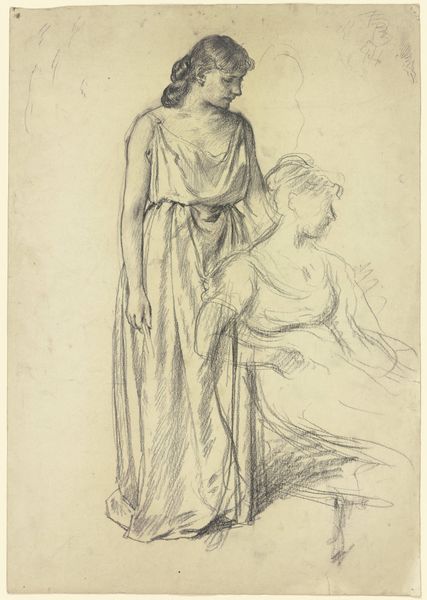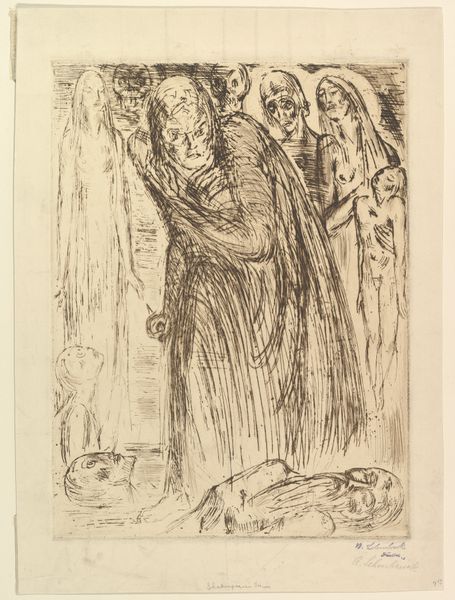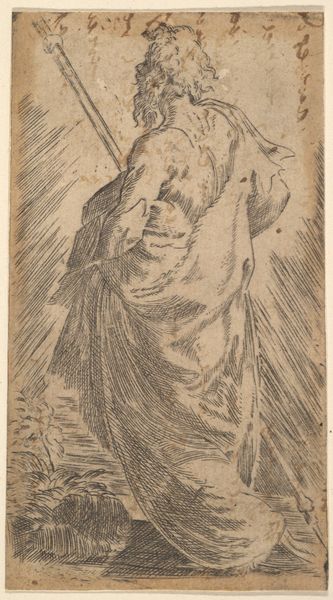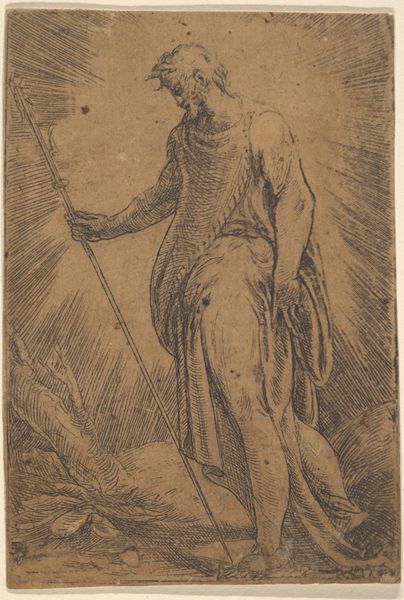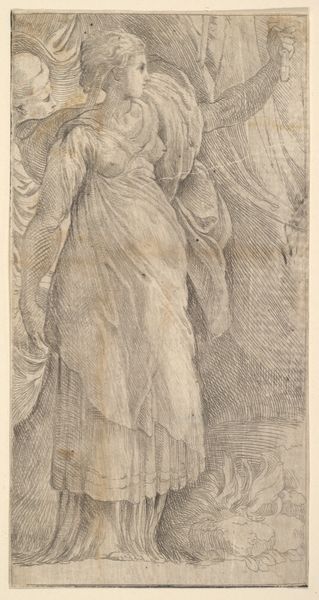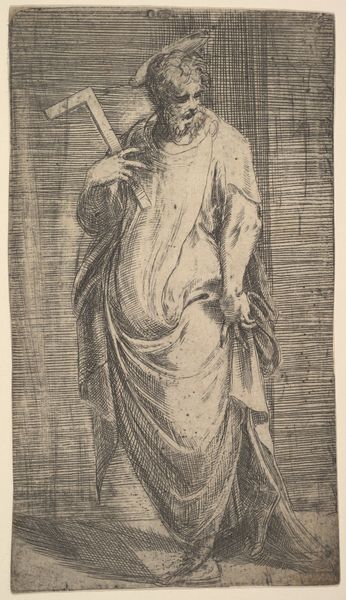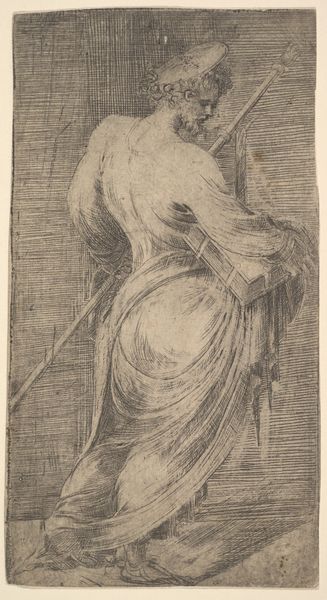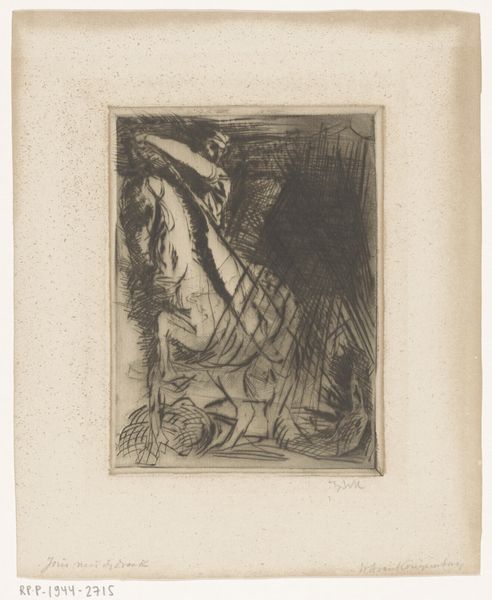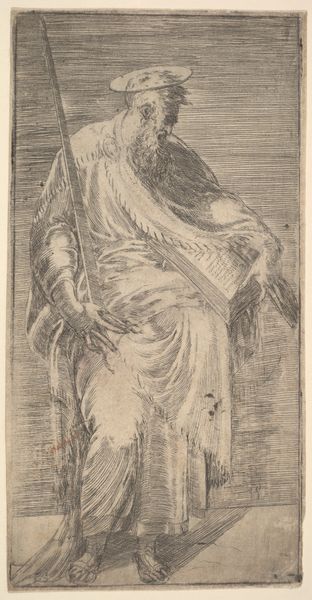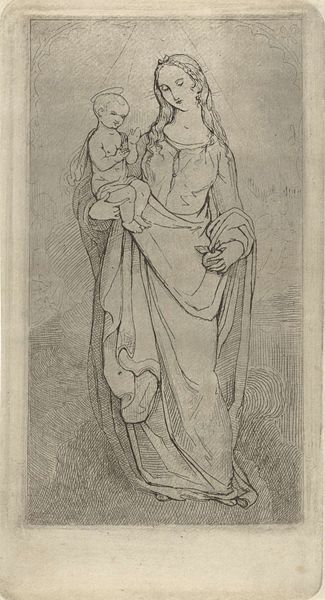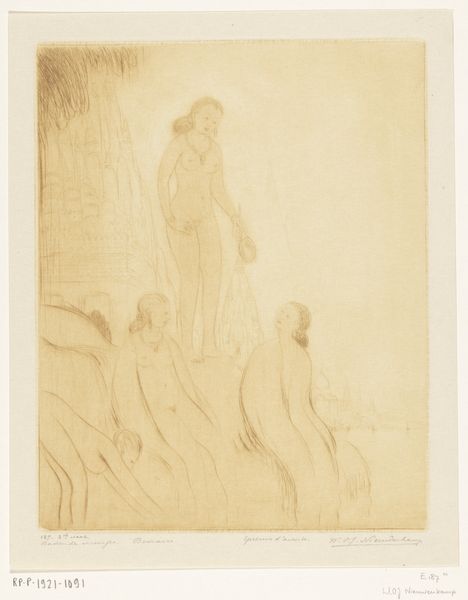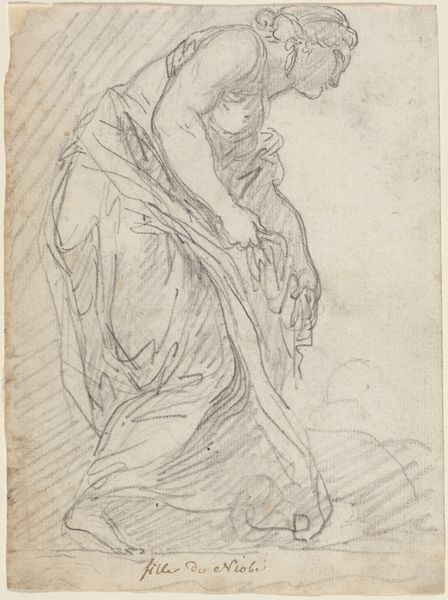
drawing, print
#
drawing
#
amateur sketch
#
light pencil work
# print
#
pen sketch
#
pencil sketch
#
personal sketchbook
#
child
#
ink drawing experimentation
#
pen-ink sketch
#
men
#
sketchbook drawing
#
portrait drawing
#
pencil work
Dimensions: plate: 15 3/4 x 11 1/4 inches (40 x 29.5 cm)
Copyright: Public Domain
Curator: The piece before us, titled "Macbeth III," was created in 1918 by Wilhelm Lehmbruck. It’s currently housed here at the Metropolitan Museum of Art. It appears to be a print, perhaps a drawing, or a reproduction of one. What strikes you about it initially? Editor: There's a raw, haunting quality to the line work. The starkness of the medium, likely ink on paper, really underscores the bleakness of the scene. The frantic energy of the etching is really quite potent—what narrative moment is Lehmbruck capturing? Curator: Lehmbruck was deeply affected by the social upheaval of World War I, and he frequently drew on classical literature to explore themes of existential suffering and human nature under stress. This drawing refers to the Shakespeare play—I’d surmise this scene to be from Act 3, during the aftermath of the murder of Banquo. We see Macbeth in the center, looking profoundly troubled, surrounded by apparitions. Editor: I'm drawn to how the figures are rendered. The almost skeletal quality—you really sense a depletion of vital energy. Is this commenting on how the violence is actually corroding Macbeth, wearing away his essence? And consider the reproductive nature of prints at the time—the work can achieve wider viewership that further speaks to this collective trauma. Curator: Exactly. The historical context is essential—this was created during a period of widespread mourning. This drawing is a visual echo of societal trauma and speaks to a world where morality and traditional hierarchies have collapsed. It becomes a visual reckoning, showing how violence erodes not just bodies, but the very foundations of order. Editor: It's fascinating to consider how Lehmbruck used such a relatively simple medium to convey such profound turmoil. The cross-hatching and sketchy lines give it a sense of immediacy, as if the artist were desperately trying to capture fleeting, nightmarish visions. He does that in such an active way—we really feel the physical act of creating these forms on the copper or zinc, prior to printing. Curator: Ultimately, "Macbeth III" embodies the profound artistic responses to a world grappling with its own darkness, reminding us that art serves as both a mirror to and a condemnation of our own history. Editor: Absolutely, and in its creation, Lehmbruck invites us to think more deeply about the materials we consume, what we value, and the very material impact violence has not only on people, but the things around us.
Comments
No comments
Be the first to comment and join the conversation on the ultimate creative platform.
